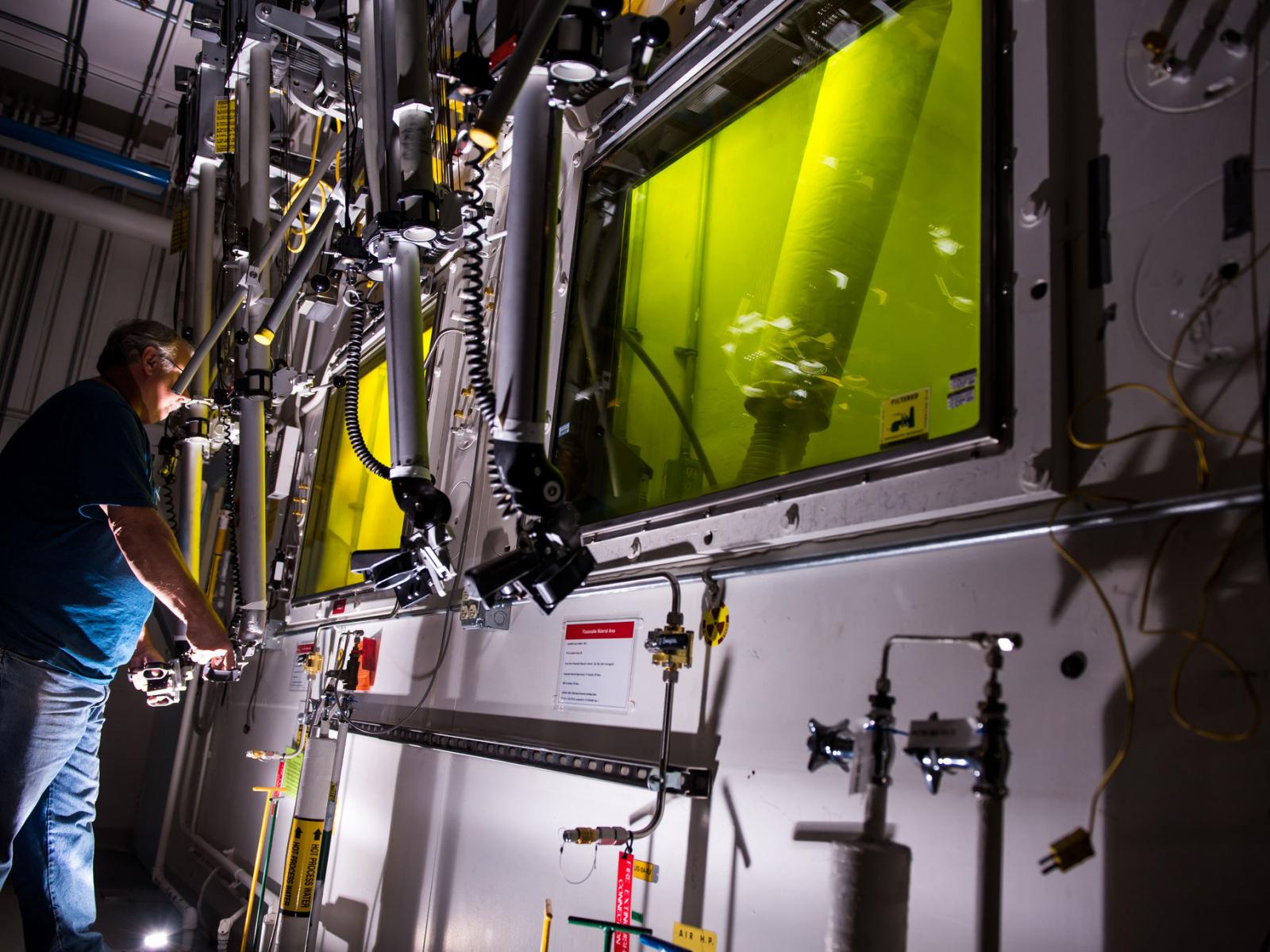Nuclear & Radiochemistry

The Shielded Analytical Laboratory has remote manipulators for processing and preparing radioactive materials that have a high radiation dose. Its home, the Radiochemical Processing Laboratory, has seven additional cells with different amounts of shielding and capabilities.
Andrea Starr | Pacific Northwest National Laboratory
At the core of our nuclear and radiochemistry capability is leadership in plutonium production and waste processing knowledge, forensic signatures of plutonium production, post-irradiation examination of materials, and tritium target fabrication. We have developed and deployed the world’s most sensitive radionuclide detection systems, now used worldwide to detect nuclear tests.
Our nuclear and radiochemistry capability forms the basis of our impact in new and improved nuclear detection systems; radioisotope production and advanced instrumentation for nuclear medicine; development of methods and systems to detect nuclear proliferation and combat terrorism; and environmental studies, monitoring, and remediation. PNNL’s Radiochemical Processing Laboratory and Physical Sciences Facility complex are critical facilities for this research.
Our capabilities include interfacial chemistry, radiochemical separations, analytical measurement techniques, actinides, separations, irradiated materials characterization, spectroscopy, and microscopy. We can process and measure plutonium and its fission products across the range of highly radioactive samples using hot cells and clean rooms. We have a unique combination of in-depth knowledge of sample analysis and high-tech instrumentation, including a focused ion beam and advanced measurement systems. Our mission-ready instrumentation includes microscopy; mass spectrometric detection; magnetic resonance; specialized ultra-low-background radiation detectors; numerous specialized wet chemistry laboratories; and ultra-trace radio analytical and radiometric facilities, including a shallow underground lab.
Nuclear and radiochemistry research at PNNL is managed for the Department of Energy’s Office of Science, High Energy Physics, Nuclear Physics, and Basic Energy Sciences. Additional sponsors are the National Nuclear Security Administration’s Defense Nuclear Nonproliferation Research and Development program, the Department of Homeland Security’s Domestic Nuclear Detection Office, and the Department of Defense’s Threat Reduction Agency.